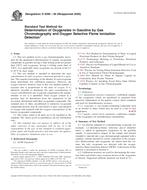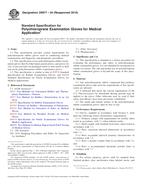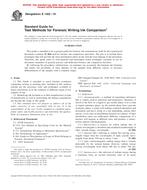1.1 This guide describes how to conduct, document and report findings of a lead hazard assessment in residential dwellings and other buildings and related areas known to contain, or are suspected to contain, lead hazards. Lead hazard assessments are intended to be conducted by certified risk assessors. This guide is applicable for use in either occupied or unoccupied properties. The use of this guide to produce accurate results is dependent on the training, experience, and knowledge of the risk assessor conducting the lead hazard assessment. Use of the procedures in this guide, when supplemented by the evaluation and recommendation process that determines action plans for controlling assessed lead hazards, provides for the conduct of a lead risk assessment (see Note 1).
Note 1–A lead risk assessment, as defined by Federal regulation (40CFR745.227(d)), includes, as part of the reporting process, a description of interim controls and abatement options for each identified lead hazard and a suggested prioritization for addressing each hazard. This guide provides for the identification of lead hazards and the prioritization for addressing each hazard guidance on the determination of appropriate interim controls and abatement options for each identified lead hazard is beyond the scope of this guide and is included in a companion standard. Guidance on the determination of appropriate interim controls and abatement options for each identified lead hazard is beyond the scope of this guide and is the subject of a standard under development by E06.23.
1.2 This guide is insufficient as the sole means to determine causes of lead poisoning in young children having an elevated blood lead level (EBL). In these cases, procedures including investigation of the total living environment of the child and a pediatric medical evaluation is needed. Reference should be made to Preventing Childhood Lead Poisoning (CDC, 1991), the Guidelines for the Evaluation and Control of Lead-Based Paint Hazards in Housing (HUD, 1997), and Screening Young Children for Lead Poisoning (CDC, 1997).
1.3 The values stated in SI units are to be regarded as the standard.
1.4 This standard does not purport to address all of the safety concerns, if any, associated with its use. It is the responsibility of the user of this standard to establish appropriate safety and health practices and determine the applicability of regulatory limitations prior to use.
1.4 This guide contains notes, which are explanatory, and are not part of the mandatory requirements of this guide.
Product Details
- Published:
- 11/10/2000
- Number of Pages:
- 11
- File Size:
- 1 file , 130 KB


